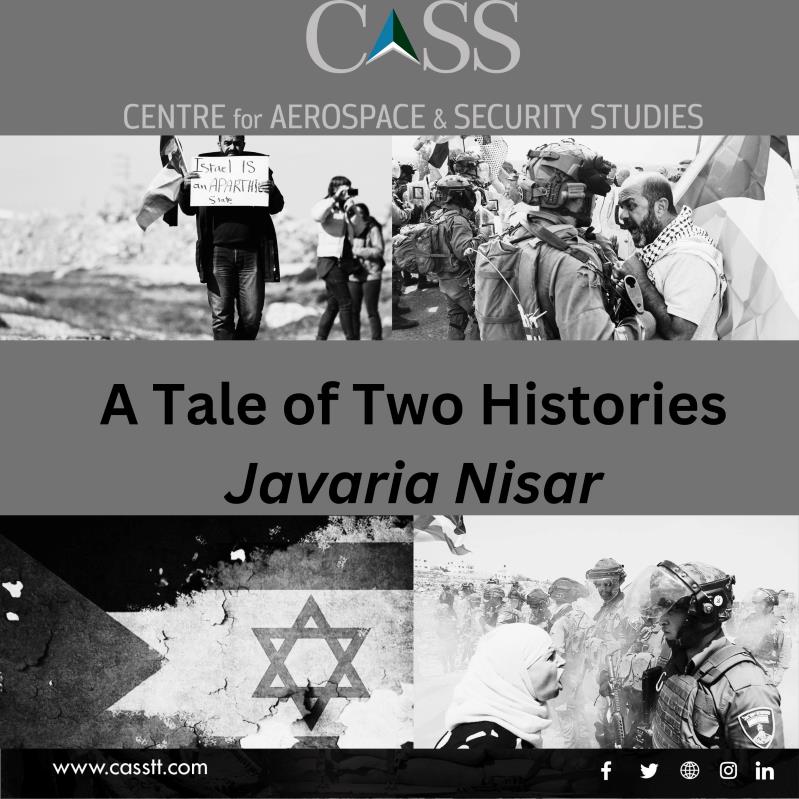As Israel celebrated its 75th ‘independence’ day on 25th April last month, Palestinians mourned more than seven decades of forced displacement and desolation in their own homeland. Israelis call this Yom Ha’atzmaut – a national holiday that commemorates the founding of the state of Israel whereas the Palestinians call it Nakba or catastrophe, referring to the ethnic cleansing and dispossession of thousands of Palestinians from their ancestral lands. Nearly 800,000 Palestinians were displaced and 500 villages and towns were ethnically cleansed of their occupants by the Israeli paramilitary between late-1947 and mid-1948. They captured 78 percent of historic Palestine leaving the remaining 22 percent to be divided into the now-occupied West Bank and the blockaded Gaza Strip.
The Nakba was not just a coincidence, rather a direct manifestation of a carefully thought-out military strategy called Plan Dalet or Plan D by Israelis to capture and ethnically cleanse Palestine. The Jewish paramilitary group Haganah participated in developing this strategy under the direction of Israel’s first Prime Minister David Ben-Gurion in order to secure Jewish control, and neutralise the Palestinians and their forces. The plan was a part of a larger strategy to expand the state of Israel beyond the assigned territories by the United Nations partition plan. The ultimate goal was to fulfill the Zionists’ ideological drive to have an exclusive Jewish state in Palestine after the end of British Mandate in 1948.
To make their plan a success, extreme violence was directed at the Palestinians, including the use of biological weapons to contaminate Akka’s water sources, slaughtering the inhabitants of Tantura and ruthless ethnic cleansing of Haifa. However, the most brutal of them all was the Deir Yassin massacre where 107 Palestinians, mainly children, women and elderly were killed by Irgun and Stern Gang Zionist militias. Cases of rape and mutilation were also documented, and the prisoners were paraded through the streets of Jerusalem’s Old City to showcase their ‘victory’. Those who managed to survive left their homes and abandoned their possessions to seek shelter elsewhere with the hope of returning one day to a free Palestine.
Since then, Israel’s settler-colonial and apartheid regime continue to persist as millions of Palestinians are still enduring a life marked by discrimination and oppression under its unlawful policies and practices. Israeli authorities are actively facilitating the transfer of Jews in Occupied Palestinian Territories (OPT) under their racial apartheid regime and granting them access to land and freedom to residency rights as compared to the Palestinians living there. They are providing incentives and subsidised housing to build settlements – a deliberate attempt to privilege the Israeli Jews at the expense of Palestinians’ systematic dispossession and segregation.
According to UN Relief and Works Agency for Palestine Refugees in the Near East (UNRWA), around six million registered Palestinian refugees, in at least 58 camps, are living in Palestine and neighbouring countries like Jordan and Syria. Most of the refugees live below the poverty line and are now becoming more and more dependent on UNRWA for assistance. They are treated as outcasts in their own homeland considering more than 70 percent of Gaza’s population is refugees residing in different camps around Gaza Strip.
However, according to the international law, refugees have the right to return to their homes and lands. Article 13(b) of the Universal Declaration of Human Rights (UDHR), adopted by the UN in 1948, affirms, ‘Everyone has the right to leave any country, including his own, and to return to his country.’ Moreover, UNGA Resolution 194 guarantees the right to Palestinian refugees to return to their properties. However, time and again, Israel not only refuses to acknowledge their legitimate right of return but also persists with its brutal settler attacks in occupied West Bank and occupied East Jerusalem to date.
75 years later, the Nakba is still an ongoing reality for the innocent Palestinians – a continued process of displacement and dispossession that has persisted overtime without any resolution in sight. It shapes the present and the future of Palestine by highlighting the story of their victimisation as well as sumud – steadfastness and resistance. As we move forward to another year of settler-colonialism in Palestine, it is pertinent for the global community to recognise the significance of acknowledging the past and working towards a just future for all the Palestinians fighting for freedom in their homeland.
Javaria Nisar is a Research Assistant at the Centre for Aerospace & Security Studies (CASS), Islamabad, Pakistan. She can be reached at [email protected].
Image Design: Mysha Dua Salman





